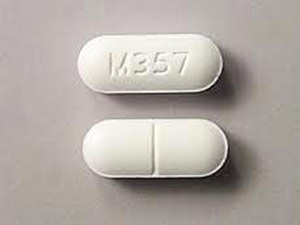Adderall XR: Extended-Release ADHD Medication
Adderall XR is a once-daily, extended-release (XR) stimulant capsule prescribed for attention-deficit/hyperactivity disorder (ADHD) in children (6+) and adults
. It contains a 50/50 mix of four amphetamine salts (dextroamphetamine sulfate and saccharate; amphetamine sulfate and aspartate) in a two-phase release capsule.

adderall xr
. As a Schedule II central nervous system stimulant
, Adderall XR increases brain norepinephrine and dopamine to improve focus and impulse control
. Key features include:
Indication: ADHD in patients ≥6 years; note: the XR form is only FDA-approved for ADHD (not narcolepsy)
Formulation: 50% fast-release + 50% delayed-release beads yields onset ~45 minutes and a second peak ~7 hours after dosing
Duration: Provides symptom control for ~10–12 hours per dose
(typically taken once each morning to avoid insomnia
Strengths: Capsules in 5, 10, 15, 20, 25, 30 mg (each color-coded)
. The generic name is “amphetamine/dextroamphetamine salts, extended-release”
and generic XR formulations exist
Regulation: Schedule II controlled substance (high abuse potential)
; misuse can cause serious cardiac or psychiatric effects
Adderall XR is typically taken once in the morning, with or without food. The capsule may be swallowed whole or opened and sprinkled on applesauce (must be eaten immediately)
. This dosing schedule provides steady ADHD control throughout the day while minimizing interference with sleep
Adderall XR: Dosage and Administration
Adderall XR dosing depends on age, weight, and response. Children (6–12 years): start 5–10 mg once daily (morning); increase by 5–10 mg weekly as needed; maximum ~30 mg/day
. Adolescents (13–17 years): start ~10 mg once daily
; doses up to ~40 mg/day (for patients ≤75 kg) or up to 60 mg/day (for >75 kg) may be used
. Adults (18+): recommended starting dose is 20 mg/day
; typical maintenance 20–40 mg/day; upper limit ~60 mg/day
. (In practice, doctors often titrate in 5–10 mg increments at weekly intervals until optimal effect is reached.)
Typical Dosing: For ADHD, most pediatric patients start at 5–10 mg/day and adults at 20 mg/day, all taken once each morning
. The dose is adjusted based on symptom control and tolerance.
Maximum Doses: Children: ~30 mg/day; Adolescents ≤75 kg: up to ~40 mg/day; Adolescents >75 kg and adults: up to ~60 mg/day
Administration: Swallow capsules whole; if needed, open and sprinkle on applesauce (consume immediately)
. Dose once in the morning (with or without food) to last through the day.
Monitor height and weight in children (stimulants can suppress appetite and growth)
. Patients with kidney or liver impairment may require lower doses. Always follow the prescribing physician’s instructions for titration and maximum dose.
Adderall XR: Generic Name and Formulations
Adderall XR’s active ingredients are amphetamine and dextroamphetamine salts (extended-release)
. In practice it is often just called “amphetamine salts XR.” Generic versions of Adderall XR (mixed amphetamine salts XR) are available.
, and some patients receive unbranded generic capsules. The branded capsule is marketed as Adderall XR (formerly by Shire, now Takeda). An alternative extended-release amphetamine is Adzenys XR-ODT (an orally dissolving tablet), which is bioequivalent to Adderall XR. All formulations deliver the same total amphetamine content via extended-release delivery.
Adderall XR: Side Effects and Precautions
Common side effects: Like other stimulants, Adderall XR frequently causes appetite loss (leading to weight loss), insomnia (trouble sleeping), dry mouth, stomach pain or nausea, headache, and anxiety.
. Patients should maintain good nutrition and sleep hygiene. Less common effects include tremors or irritability.
Serious risks: Adderall XR can increase heart rate and blood pressure
. Rarely it has been associated with sudden death in patients with underlying cardiac conditions
. Psychiatric adverse effects (agitation, hallucinations, paranoia, mania or aggression) can occur, especially in susceptible individuals
. Adderall XR also carries a high risk of misuse, dependence, or overdose
Contraindications: Do not use in patients with known structural heart disease, severe hypertension, hyperthyroidism, or glaucoma.
Precautions: Monitor vital signs regularly. Children on stimulants should have periodic growth checks
. Avoid abrupt discontinuation (withdrawal symptoms). Consult a doctor before use if personal/family history of psychosis, bipolar disorder, or substance abuse.
Patients should report any chest pain, shortness of breath, fainting, or unusual mood changes immediately.
Adderall XR: Pharmacokinetics (Onset, Peak, Duration)
Adderall XR is designed for prolonged effect. Onset: Initial drug release begins ~45 minutes after dosing
. Peak levels: Plasma concentrations of amphetamine peak at about 7 hours post-dose
. Duration: Clinically, Adderall XR relieves ADHD symptoms for up to ~10–12 hours
(much longer than immediate-release Adderall). Effectively, a single morning dose covers a full school or workday.
Because of its extended delivery, Adderall XR can be more stable than splitting IR doses. Food does not change total absorption, only slightly delays peak by a couple of hours, so it may be taken with or without food.
Adderall XR vs Adderall IR
Adderall XR and Adderall (immediate-release) contain the same active salts but differ in release profile. Formulation: Adderall IR is a tablet that releases all medication at once, while XR is a capsule with 50% fast-release and 50% delayed beads
. Duration: IR effects last ~4–6 hours per dose; XR lasts ~10–12 hours per dose
. Therefore, IR often requires 2–3 doses per day, whereas XR is taken once daily.
Narcolepsy: Only Adderall IR is approved for narcolepsy, not the XR form
Switching: Patients on multiple IR doses may switch to a single XR dose equal to their total daily IR dose
. This provides more convenient coverage without changing the total daily amount.
Bullet points:
Release: XR = extended-release capsule; IR = immediate-release tablet
Usage: XR once daily; IR 2–3 times daily as needed.
Coverage: XR provides stable 12-hour coverage; IR provides ~6 hours and may require boosters.
Indications: Both treat ADHD; only IR is indicated for narcolepsy
Adderall XR vs Vyvanse
Adderall XR and Vyvanse are both long-acting stimulants for ADHD (ages 6+), but they differ chemically and pharmacologically
Active ingredient: Adderall XR is mixed amphetamine salts (both d- and l-amphetamine)
. Vyvanse is lisdexamfetamine, an inactive prodrug that the body converts to d-amphetamine
Dosage: Adderall XR capsules come in 5–30 mg; Vyvanse capsules/tablets come in 10–70 mg (usual range 30–70 mg)
Duration: Adderall XR lasts about 10–12 hours; Vyvanse lasts up to 14 hours
Onset/Abuse: Vyvanse’s prodrug design may lead to smoother onset and theoretically lower abuse risk (must be metabolized)
Indications: Both treat ADHD in children and adults; Vyvanse is also approved for binge-eating disorder. Vyvanse is active only after metabolic conversion, unlike XR which acts quickly from ingestion
In practice, some patients find one works better or has fewer side effects. Both require once-daily dosing, but Vyvanse’s effects can sometimes feel smoother or longer. Insurance coverage and patient factors may guide choice.
Adderall XR: Cost and Availability
Adderall XR brand (Adderall XR®) can be expensive without insurance, but generic XR is available. Pricing varies by location and plan. For example, GoodRx reports the average retail price for 30 capsules of 20 mg Adderall XR is about $317, but coupons can reduce it to roughly $214 (a ~32% discount)
. Lower-strength capsules cost proportionally less. Patients are advised to use prescription savings cards or generic alternatives to lower costs.
Generic: FDA-approved generic amphetamine XR capsules are sold at lower prices; ask your pharmacist.
Coupons/Discounts: Pharmacy discount programs (GoodRx, etc.) often offer significant savings on Adderall XR
Insurance: Coverage depends on your plan’s formulary. Adderall XR is commonly covered for ADHD, but co-pays and prior authorization rules vary.
Because cost can be a concern, discuss with your doctor or pharmacist any issues affording this medication.
Adderall XR: Shortage and Demand
In recent years, demand for ADHD medications has surged, leading to supply issues. While the brand Adderall XR (Shire/Takeda) is generally available, many generic extended-release amphetamine salts have faced intermittent shortages. As of 2023–2025, manufacturers like Teva reported shortages of some amphetamine XR generics due to high demand
Fortunately, Shire’s brand Adderall XR and other formulations (e.g., Mydayis, Adzenys XR) are available. If Adderall XR is unavailable, doctors may substitute other ADHD stimulants (different amphetamines or methylphenidate products) during shortages. Patients experiencing refill issues should consult their prescriber for alternatives or help with finding a pharmacy.
Adderall XR: Patient Experiences (Reddit Insights)
Many patients share their Adderall XR experiences on Reddit and other ADHD forums. While these are not medical sources, they provide real-world perspectives:
Effectiveness: Users often report that Adderall XR helps with focus, organization, and productivity throughout the school or workday. Some note it works best when paired with good sleep and nutrition.
Side Effects: Commonly mentioned issues include appetite suppression, insomnia if taken late, and anxiety at higher doses.
Duration: Most describe the XR effects lasting 10–12 hours, though some report a “wear-off crash” in the evening.
Comparisons: Reddit threads frequently compare Adderall XR vs Vyvanse, with some patients preferring Vyvanse’s smoother effect, while others prefer the stronger onset of Adderall XR.
Shortages: Many users discuss recent Adderall XR shortages and switching temporarily to IR or other stimulants when XR is unavailable.
⚠️ Note: Reddit experiences are anecdotal and vary widely. Always rely on your prescribing doctor for medical guidance.
Frequently Asked Questions About Adderall XR
Q1: What does Adderall XR do?
Adderall XR is an extended-release stimulant medication for ADHD. It helps improve focus, attention, and impulse control by balancing certain brain chemicals.
Q2: Is Adderall XR stronger than regular Adderall?
No, both contain the same active ingredients. The main difference is that Adderall XR lasts up to 12 hours, while Adderall IR works faster but wears off in about 4–6 hours.
Q3: How long does it take Adderall XR to work?
Adderall XR typically starts working within 30–60 minutes and reaches peak levels in about 7 hours.
Q4: How long does Adderall XR last?
The effects usually last 10–12 hours, making it effective for most of the day with a single dose.
Q5: Is 20 mg of Adderall XR a lot?
A 20 mg dose is considered moderate. Doctors may adjust the dosage based on individual needs, but the maximum recommended daily dose is typically 40 mg for adults.
Q6: What are the side effects of Adderall XR?
Common side effects include loss of appetite, dry mouth, insomnia, and increased heart rate. More serious risks include high blood pressure, mood changes, or dependence. Always consult your doctor.
Q7: Can you take Adderall XR every day?
Yes, Adderall XR is usually prescribed for daily use, but some doctors may recommend “drug holidays” to reduce tolerance or side effects. Always follow medical advice.
Q8: What happens if you miss a dose of Adderall XR?
If you miss a dose, take it as soon as you remember, unless it’s late in the day. Taking it too late can cause insomnia. Never double up on doses.
Q9: Can you stop taking Adderall XR suddenly?
Stopping suddenly may cause withdrawal symptoms such as fatigue, mood changes, or sleep problems. It’s important to taper off under medical supervision.
Q10: Who should not take Adderall XR?
Adderall XR is not recommended for people with heart disease, uncontrolled high blood pressure, hyperthyroidism, or a history of substance misuse. Always consult a healthcare professional before use.
















Reviews
There are no reviews yet.